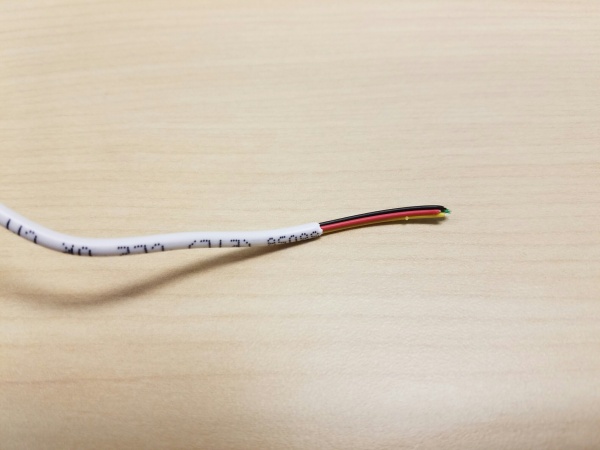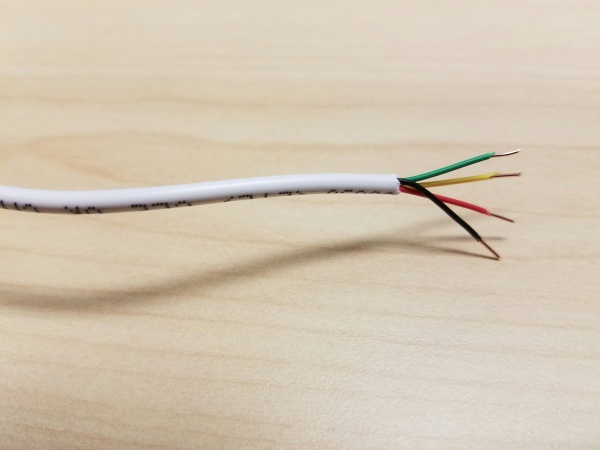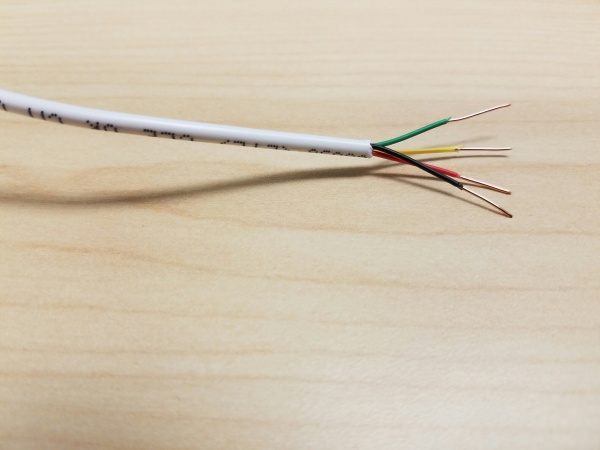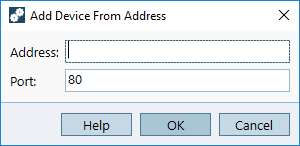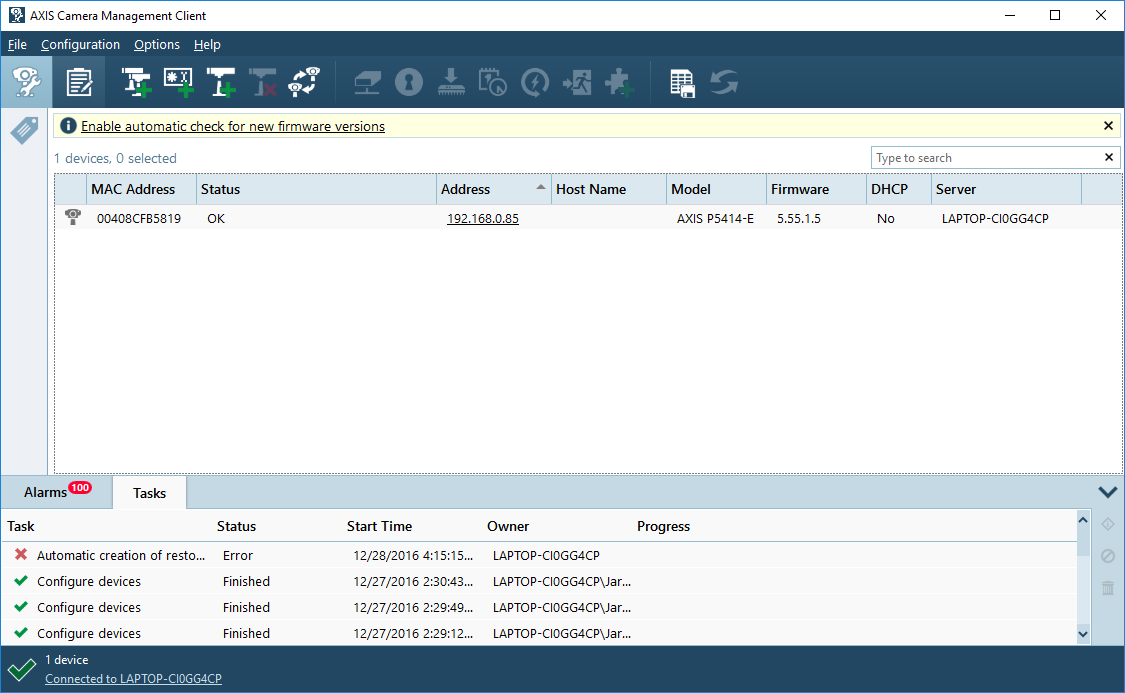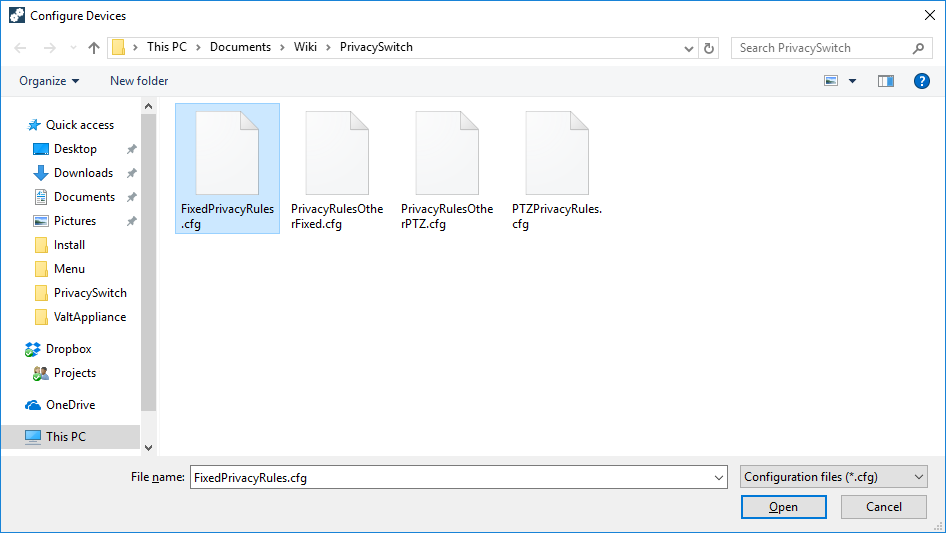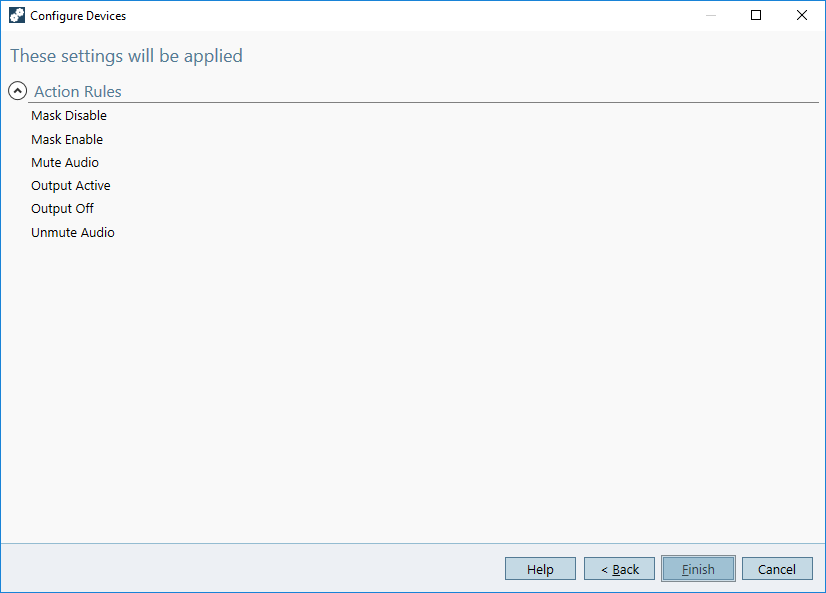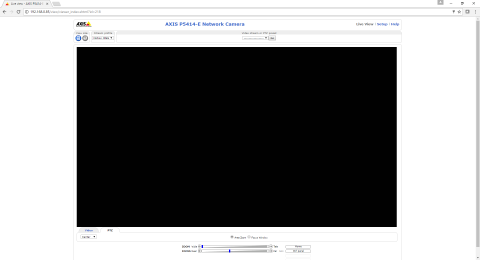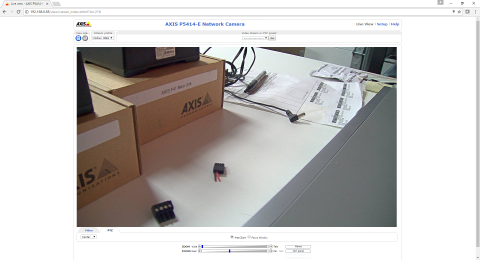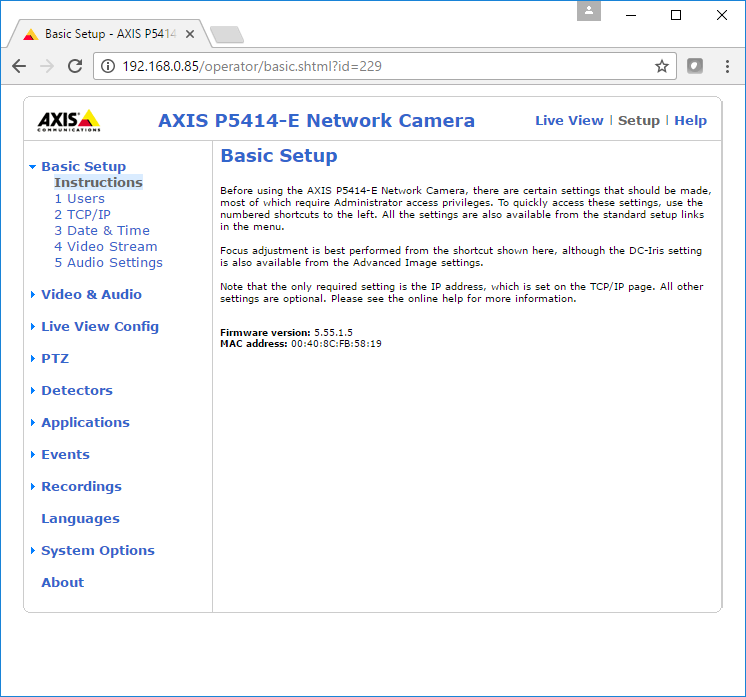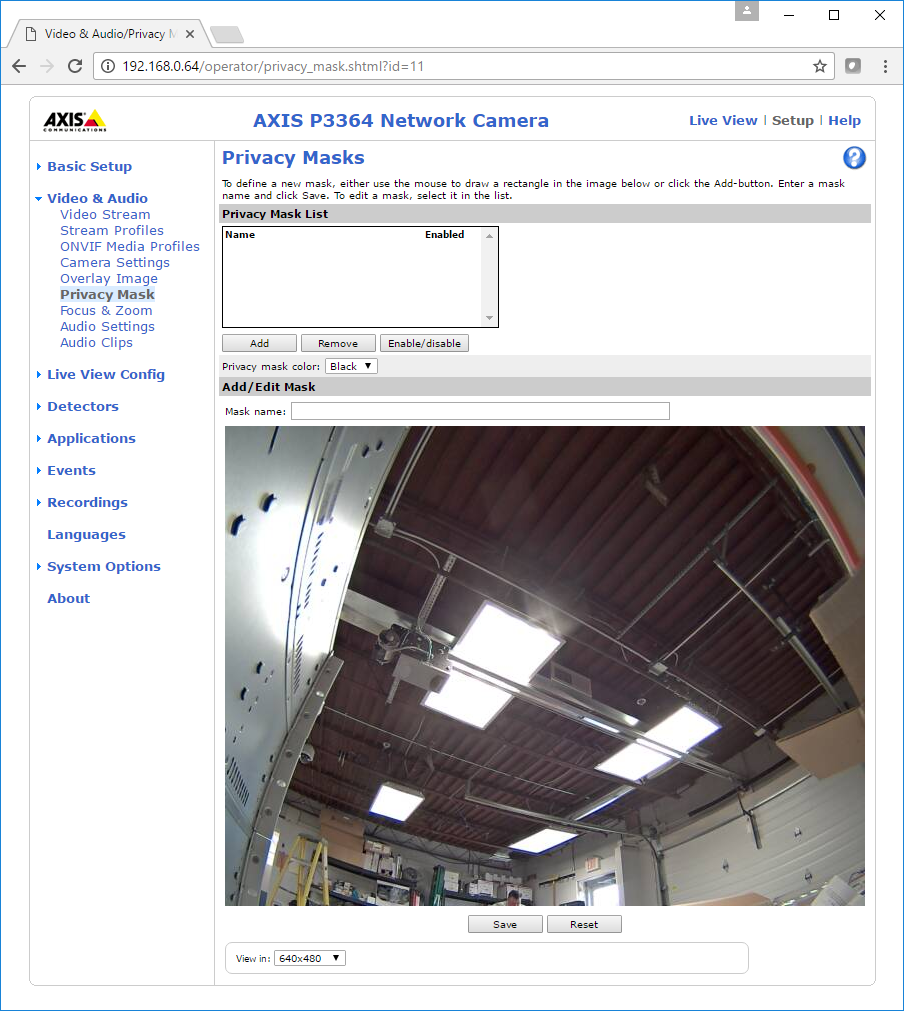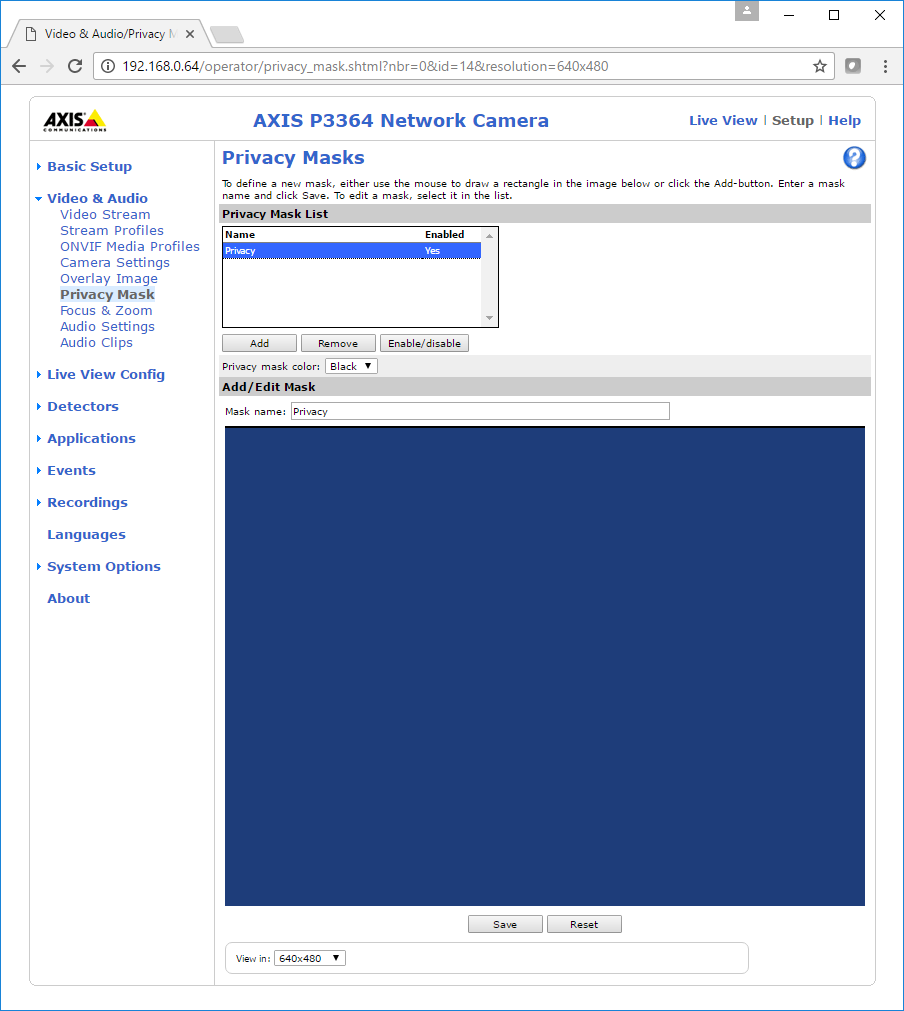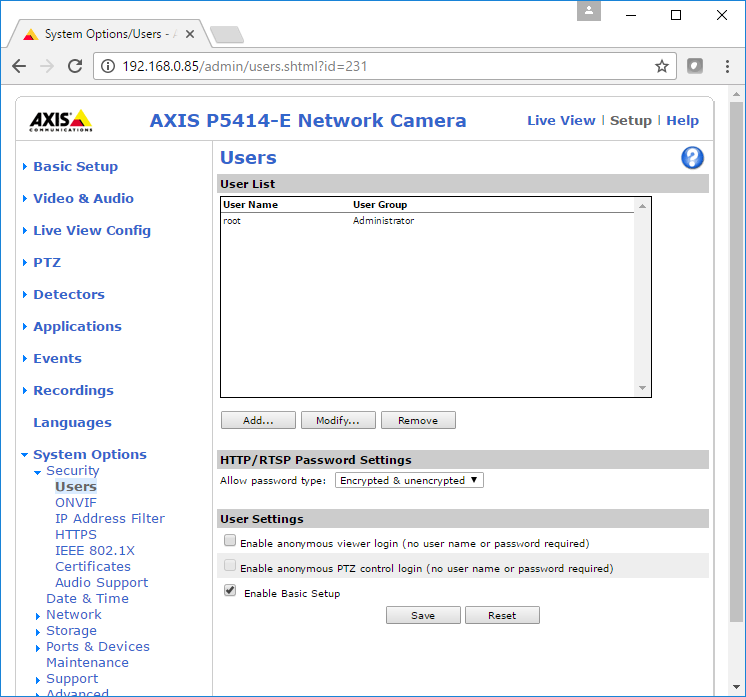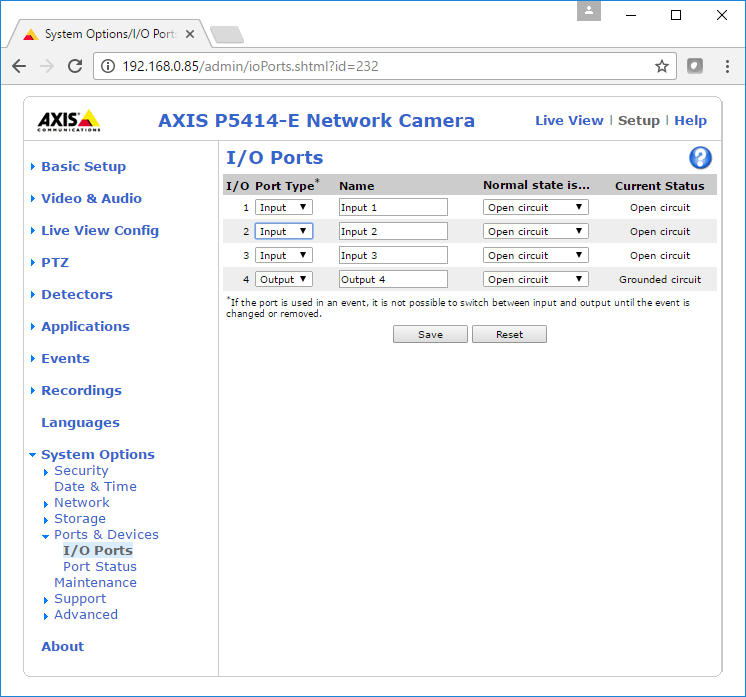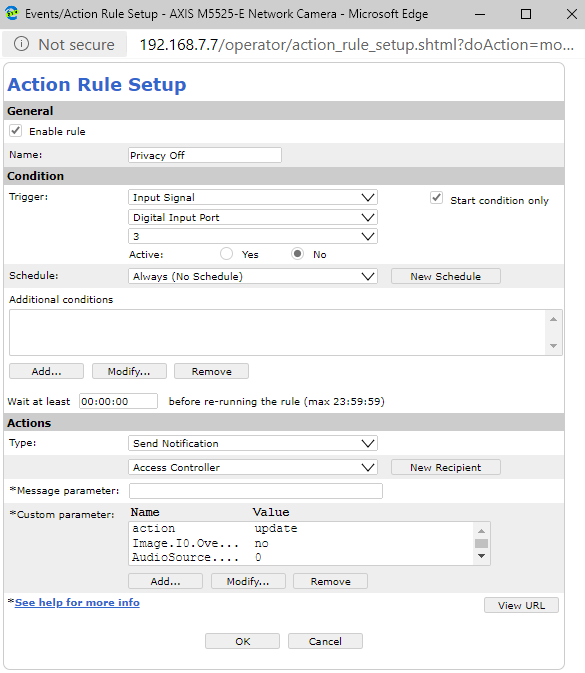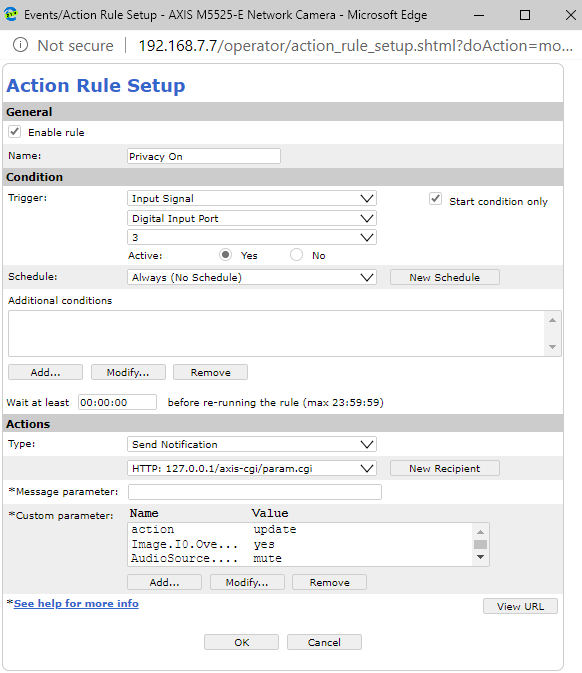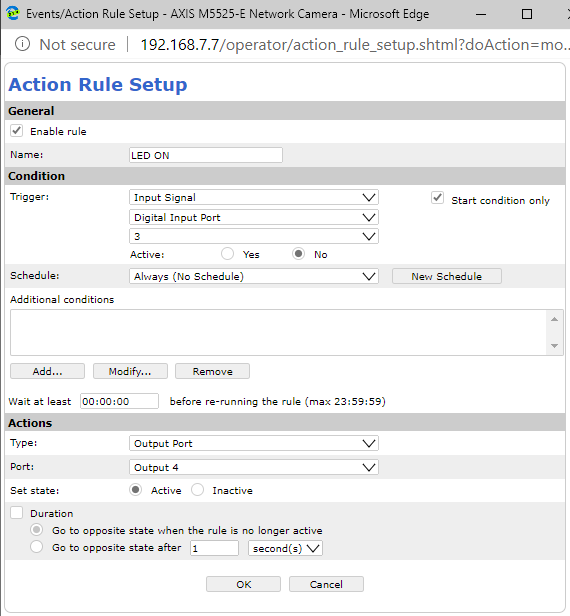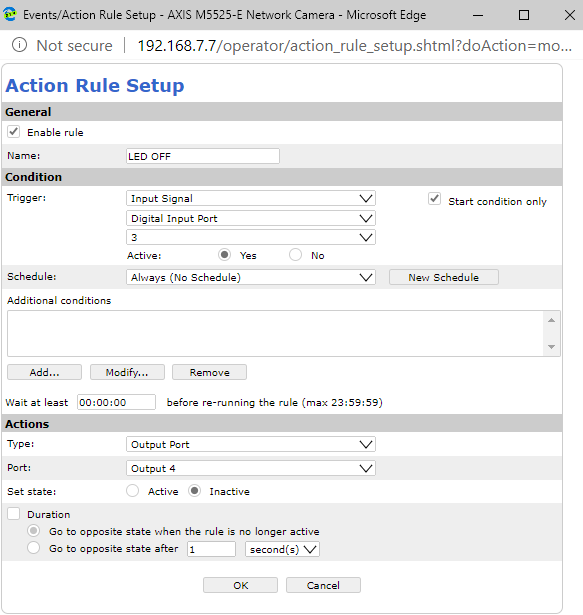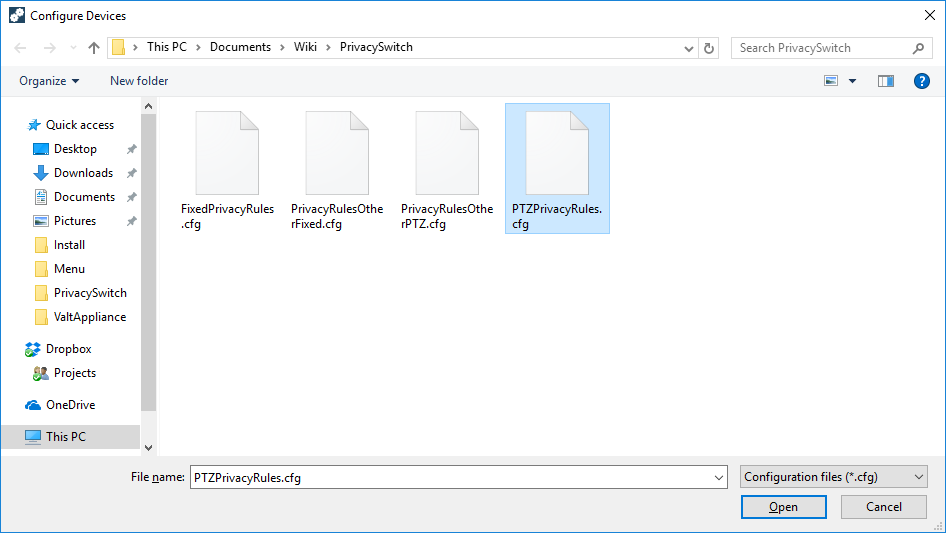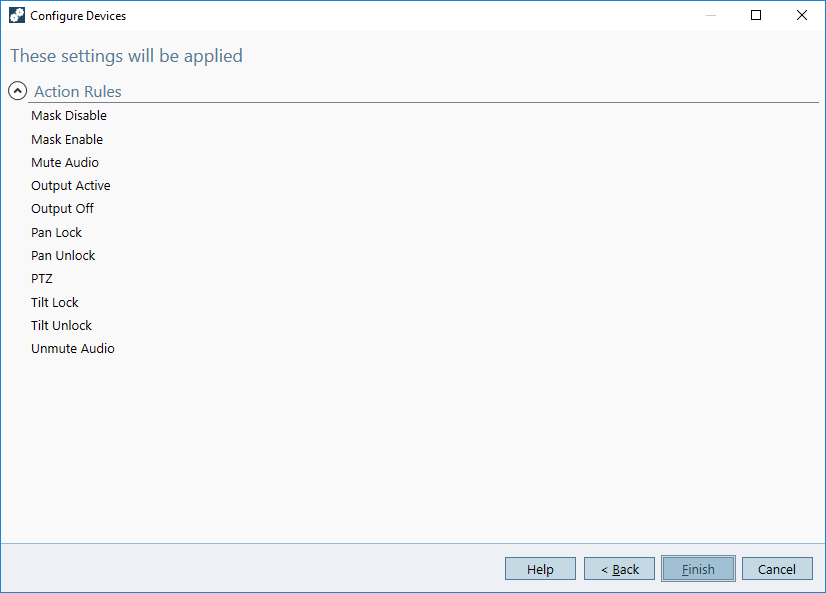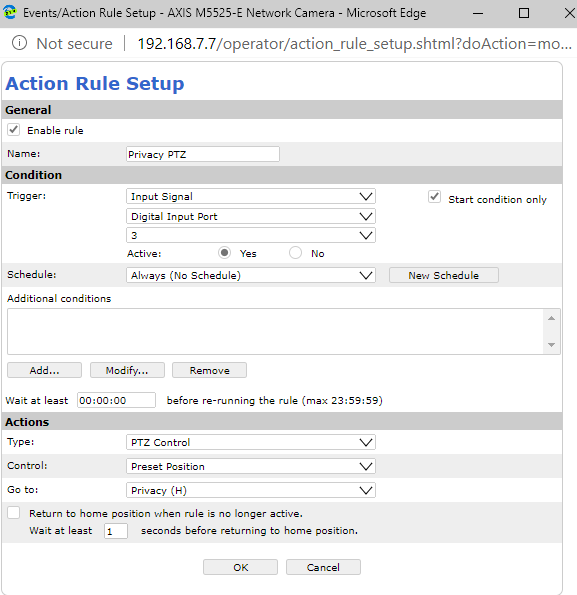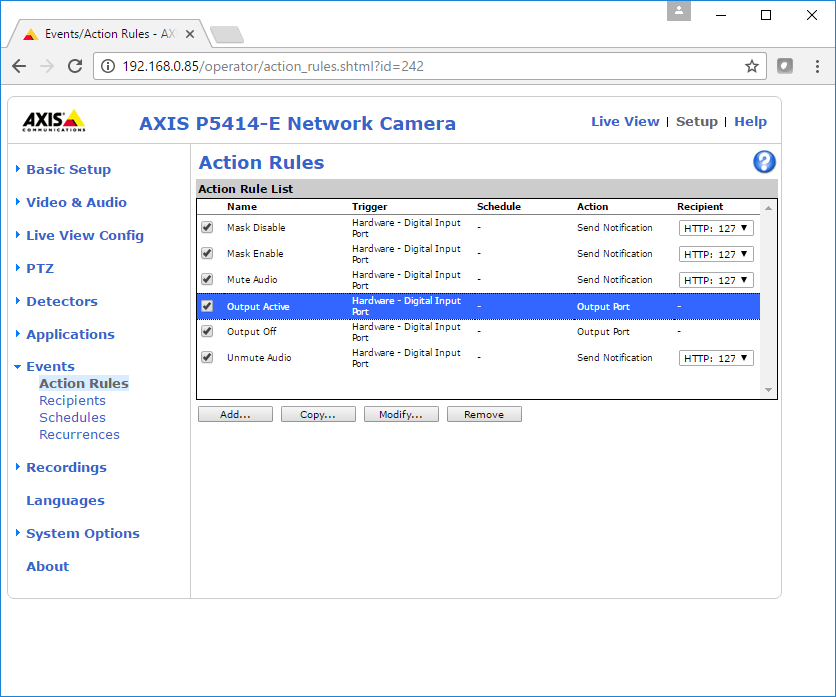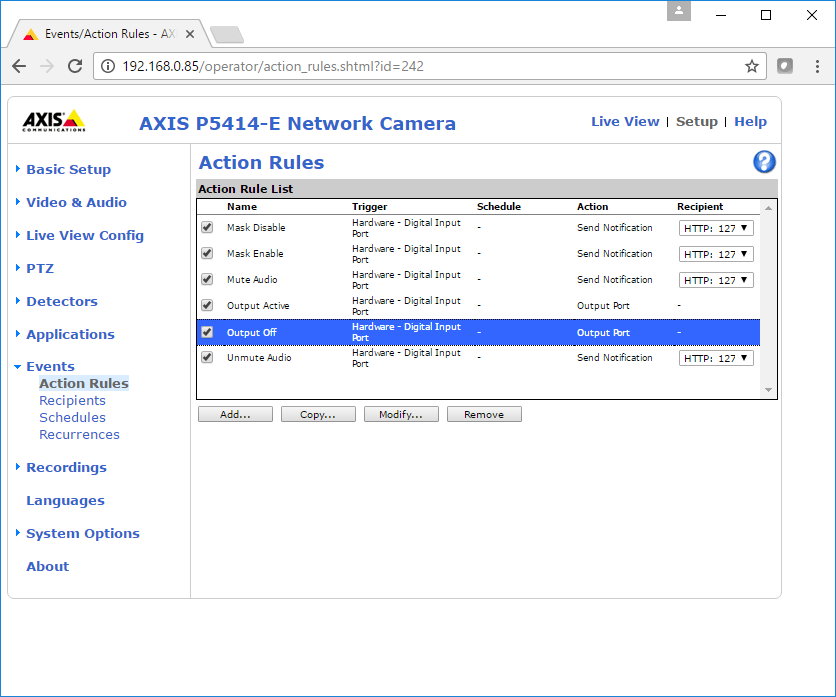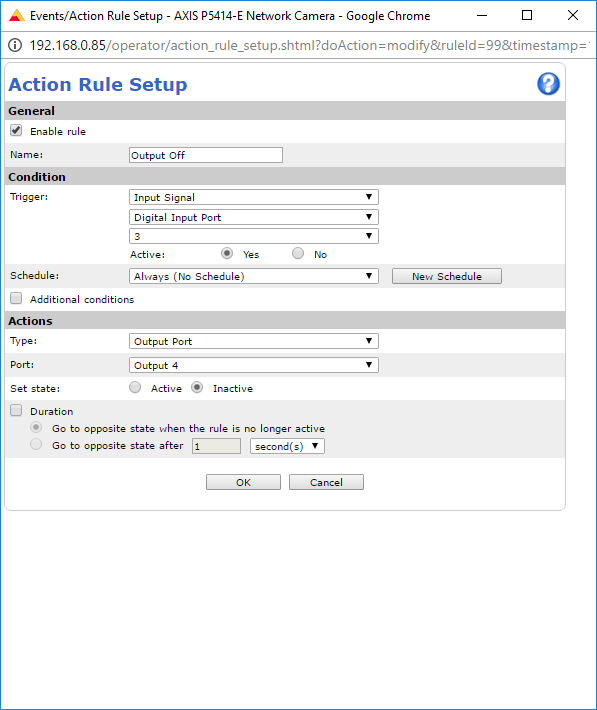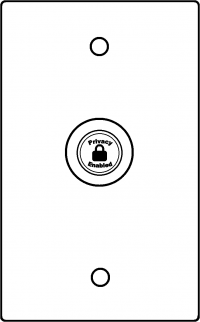Privacy Switch
Contents
Overview
The privacy switch is a customizable solution for placing the cameras connected to the VALT system in privacy mode. The instructions below will outline how to configure a privacy switch that will stay illuminated while the switch is in the OFF position. Flipping the switch to the ON position will extinguish the light and engage privacy mode. The switch and LED are independent and the behavior can be customized. See the variations section at the bottom of this article for more information.
These instruction are written for use with a camera with 4 IO ports. Port 1 and 2 are reserved for use with the VALT Recording Start/Stop button.
Compatible Cameras
The privacy switch should be usable with any AXIS camera with at least one free input and one free output. The camera must be running firmware version 5.50 or higher.
- Axis P5514
- Axis P5515
- Axis P5414-E
- Axis P5415-E
- Axis F41
- Axis P3364/65*
- Axis P3374/75-V*
- Axis P3235-LVE*
- Axis Q8414-LVS*
- Axis M5525-E
- Axis P5635 MKII
* These cameras can only be used with a single ancillary device (ie: Button or privacy switch). To use these with a camera that does not have 4 I/O ports, you will need to adjust the event rules.
Required Parts and Tools
- VALT Privacy Switch
- Mud Ring or Single Gang Box
- Face Plate
- Wire Cutters/Strippers
- 22/4 solid unshielded plenum
- Jab Saw (used to cut hole)
- Wire fishing poles or tape
Wire Diagrams by Camera
Wire Diagrams by Camera
Installation Instructions
- Cut a hole in the wall where the privacy switch will be mounted.
- Insert the mud ring into the hole, and attach it.
- Run 22/4 from the camera to the hole.
- Strip the outer insulation from both ends of the 22/4.
-
- Strip approximately 1/4 inch of insulation off of each wire in the 22/4 on the camera side
-
- Insert the wires into the IO connector on the camera according to the chart below.
-
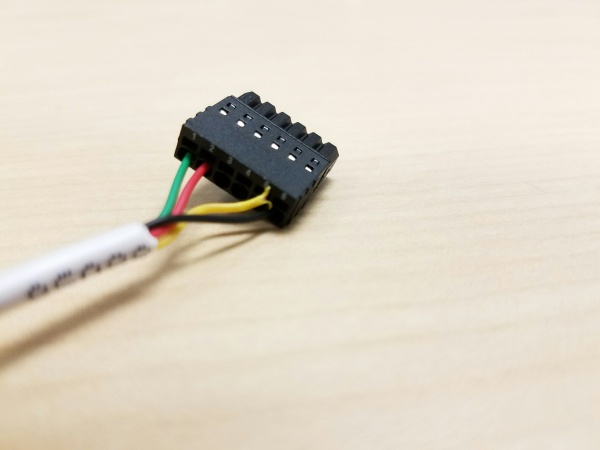
- Pin 1: Green
- Pin 2: Red
- Pin 5: Yellow
- Pin 6: Black
- See the chart at the end of this section for a direct mapping between the switch and I/O connector
-
- Strip approximately 1/2 inch of insulation off each wire in the 22/4 on the switch side.
-
- Splice the wires to the switch according to the chart below.
-
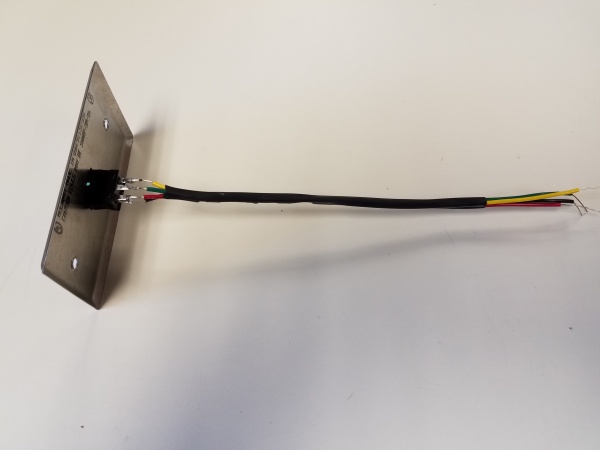
-

- Green - Green
- Yellow - Yellow
- Red - Red
- Black - Black
- Connections should be connected with B connectors
-
- Attach the switch to the mud ring.
Wiring Map
Privacy Switch Lead Color Phoenix Connector Switch Green Pin 1 + Red Pin 2 Switch Yellow Pin 5 - Black Pin 6
Configuration
Prior to configuring the cameras for use with the privacy switch, make sure that the cameras have already been set up with a valid IP address, and are configured according to VALT Specifications.
Fixed Camera
Load Rules
- If you prefer to configure the camera for Privacy manually, skip to SET PRIVACY MASK.
- Download the camera rules, using the links below:
- Open Access Device Manager.
- Click on the Add Device from Address icon or Add Devices from IP Range.
-
- Enter the IP address of the camera or the IP range using a * for the last quartet if adding multiple.
- Click OK.
- Enter the username and password for the camera(s).
- Click OK.
- The camera(s) should now appear in the list of devices.
- Right click on the camera(s), and select Configure Devices. Configure from the menu.
- Click the Configuration File button.
- Browse to where configuration file is saved, and select it.
- Click Open.
- Click Next.
- Click Finish.
- When the rules have successfully loaded, a message will display at the bottom of the window.
Set Privacy Mask
This can be done through the API or through the web browser of the camera.
Via API
- Open a web browser.
- Copy and paste the following link into the address bar. Replace ipaddress with the ip address of the camera:
- http://ipaddress/axis-cgi/privacymask.cgi?action=add&name=mask1&width=100&height=100
- Press Enter to submit the address.
- The mask should now be created. This can verified by browsing to the IP address of the camera. The live view should show a black screen.
- Copy and paste the following link into the address bar. Replace ipaddress with the ip address of the camera:
- http://ipaddress/axis-cgi/param.cgi?action=update&Image.I0.Overlay.MaskWindows.M0.Enabled=no
- This should disable the mask created. This can be verified by browsing to the IP address of the camera. The live view should show a live view from the camera.
Via Web Interface
Perform these steps only if configuring the mask via API fails.
- Open a web browser.
- Navigate to the IP address of the camera.
- If prompted, enter the username and password for the camera.
- Click on Setup in the upper right hand corner of the window.
- Click on Video & Audio.
- Click on Privacy Mask.
- Click Add.
- Enter Privacy in the Mask name field.
- Expand the blue box slowly using a mouse until it covers the entire image.
- Click Save.
- Click on the Privacy mask just created.
- Click Enable/Disable.
Add Recipient
Some of the rules point to a recipient at a specific IP address, so the camera must have a recipient set up for itself.
- Click on Setup in the upper right hand corner of the window.
- Click on Events.
- Click on Recipients.
- Click on Add.
- Add Self in the name field
- In Recipient, type
http://127.0.0.1/axis-cgi/param.cgi
or
http://IPADDRESS/axis-cgi/param.cgi
- Type in the login credentials for the camera.
- Click Test.
- Click Close.
Manual Set up of Privacy Rules
This is how to create the privacy rules if loading the config file doesn't work properly.
Update I/O Ports
- Open a web browser.
- Navigate to the IP address of the camera.
- If prompted, enter the username and password for the camera.
- Click on Setup in the upper right hand corner of the window.
- Click on System Options.
- Click on Ports & Devices.
- Change I/O Port 2 to Output. For an F41, change I/O Port 4 to Output. For a camera who's ports do not alternate, simply rename the output "Output 2".
- Click Save.
Privacy Rules for Fixed
Privacy Off Rules
| Name | Value |
|---|---|
| action | update |
| Image.I0.Overlay.MaskWindows.M0.Enabled | no |
| AudioSource.A0.InputGain | 0 |
| PTZ.Various.V1.PanEnabled | true |
| PTZ.Various.V1.TiltEnabled | true |
| PTZ.Various.V1.ZoomEnabled | true |
| autofocus | on |
- If during the course of audio testing, the cameras have been set to gain other than 0, you must also update the gain value in these rules.
Privacy On Rules
| Name | Value |
|---|---|
| action | update |
| Image.I0.Overlay.MaskWindows.M0.Enabled | yes |
| AudioSource.A0.InputGain | mute |
| PTZ.Various.V1.PanEnabled | false |
| PTZ.Various.V1.TiltEnabled | false |
| PTZ.Various.V1.ZoomEnabled | false |
LED On
LED Off
PTZ Camera
Load Rules
- Download the camera rules using the links below:
- Open Access Device Manager.
- Click on the Add Device from Address icon or Add Devices from IP Range.
- Enter the IP address of the camera or the IP range using a * for the last quartet if adding multiple.
- Click OK.
- Enter the username and password for the camera(s).
- Click OK.
- The camera(s) should now appear in the list of devices.
- Right click on the camera(s) and select Configure Devices. Configure from the menu.
- Click the Configuration File button.
- Browse to where the configuration file is saved and select it.
- Click Open.
- Click Next.
- Click Finish.
- When the rules have successfully loaded, a message will display at the bottom of the window
Set Privacy Location
- Open a web browser.
- Copy and paste the following link into the address bar. Replace ipaddress with the ip address of the camera:
- http://ipaddress/axis-cgi/com/ptzconfig.cgi?setserverpresetname=Privacy&home=yes
- Press Enter to submit the address.
Set Privacy Mask
This can be done through the API or through the web browser of the camera.
Via API
- Open a web browser.
- Copy and paste the following link into the address bar. Replace ipaddress with the ip address of the camera.
- http://ipaddress/axis-cgi/privacymask.cgi?action=add&name=mask1&width=100&height=100
- Press Enter to submit the address.
- The mask should now be created. This can be verified by browsing to the IP address of the camera. The live view should show a black screen.
- Copy and paste the following link into the address bar. Replace ipaddress with the ip address of the camera:
- http://ipaddress/axis-cgi/param.cgi?action=update&Image.I0.Overlay.MaskWindows.M0.Enabled=no
- This should disable the mask created. This can be verified by browsing to the IP address of the camera. The live view should show a live view from the camera.
Via Web Interface
Perform these steps only if configuring the mask via API fails.
- Open a web browser.
- Navigate to the IP address of the camera.
- If prompted, enter the username and password for the camera.
- Click on Setup in the upper right hand corner of the window.
- Click on Video & Audio.
- Click on Privacy Mask.
- Click Add.
- Enter Privacy in the Mask name field.
- Expand the blue box slowly using a mouse until it covers the entire image.
- Click Save.
- Click on the Privacy mask just created.
- Click Enable/Disable.
Add Recipient
Some of the rules point to a recipient at a specific IP address, so the camera must have a recipient set up for itself.
- Click on Setup in the upper right hand corner of the window.
- Click on Events.
- Click on Recipients.
- Click on Add.
- Add Self in the name field
- In Recipient, type
http://127.0.0.1/axis-cgi/param.cgi
or
http://IPADDRESS/axis-cgi/param.cgi
- Type in the login credentials for the camera.
- Click Test.
- Click Close.
Manual Set up of Privacy Rules
This is how to create the privacy rules if loading the config file doesn't work properly.
Update I/O Ports
- Open a web browser.
- Navigate to the IP address of the camera.
- If prompted, enter the username and password for the camera.
- Click on Setup in the upper right hand corner of the window.
- Click on System Options.
- Click on Ports & Devices.
- Change I/O Port 4 to Output.
- Click Save.
Privacy Rules for PTZ
Privacy Off Rules
| Name | Value |
|---|---|
| action | update |
| Image.I0.Overlay.MaskWindows.M0.Enabled | no |
| AudioSource.A0.InputGain | 0 |
| PTZ.Various.V1.PanEnabled | true |
| PTZ.Various.V1.TiltEnabled | true |
| PTZ.Various.V1.ZoomEnabled | true |
| autofocus | on |
Privacy On Rules
| Name | Value |
|---|---|
| action | update |
| Image.I0.Overlay.MaskWindows.M0.Enabled | yes |
| AudioSource.A0.InputGain | mute |
| PTZ.Various.V1.PanEnabled | false |
| PTZ.Various.V1.TiltEnabled | false |
| PTZ.Various.V1.ZoomEnabled | false |
Privacy PTZ
LED On
LED Off
Multiple Cameras
A single privacy switch can be used to trigger privacy mode on multiple cameras. In order to accomplish this, each camera must be configured and then rules must be created in the MAIN CAMERA (the camera attached to the switch) to trigger privacy mode on the other cameras. These rules are similar to the rules used with the primary camera, but vary slightly. Follow the steps below to configure a room with multiple cameras.
Configure Main Camera
Click on the appropriate link for the initial configuration of the Main Camera before moving on (links to config pages with all steps) In addition to this initial configuration, the Main Camera also needs a recipient for each remote camera, as well as a set of privacy rules for each remote camera within the room.
Add Recipients
Load Rules
Load the rules for remote cameras via a config file here: (links to download config files). To complete this manually, simply copy all events (except for LED rules). Then update the recipient for the copies to the remote cameras.
Configure Additional Camera
Click on the appropriate link for the initial configuration of the Remote Camera(s) before moving on (links to config pages with only Privacy Mask and/or Privacy Preset) That's it for remote cams.
Variations
LED Lit to Show Privacy Mode Engaged
This variation can be accomplished by reversing the triggers on the output rules.
- Configure the cameras and load the rules as outlined above.
- Open a web browser
- Navigate to the IP address of the primary camera.
- If prompted enter the username and password for the camera.
- Click on Setup in the upper right hand corner of the window.
- Click on Events.
- Click on the Output Active rule
- Click Modify
- Under trigger conditions, change Active from No to Yes
- Click OK
- Click on the Output Off Rule
- Click Modify
- Under trigger conditions, change Active from Yes to No
- Click OK
Privacy Mode Engaged by Flipping Switch Off
This variation can be accomplished by reversing the triggers on all rules.
- Configure the cameras and load the rules as outlined above.
- Open a web browser
- Navigate to the IP address of the primary camera.
- If prompted enter the username and password for the camera.
- Click on Setup in the upper right hand corner of the window.
- Click on Events.
- Click on the first rule
- Click Modify
- Under trigger conditions reverse the Active condition.
- If currently set to Yes, change to No
- If currently set to No, change to Yes
- Click OK
- Repeat this process for every rule.
New Structure
New Privacy Button 2020-Present(under construction)

